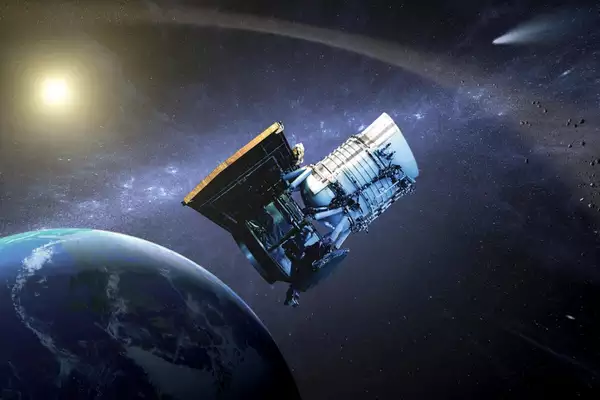Recently, NASA has launched the Tanager-1 satellite.
About Tanager-1
- Aim: To detect and track methane and carbon dioxide emissions using advanced imaging spectrometer technology.
- Type: Tanager-1 is the first satellite of the Carbon Mapper’s Coalition.
- Developed by: Planet Labs PBC, in collaboration with Carbon Mapper, a nonprofit organization focused on mitigating greenhouse gas emissions.
Objectives:
- To detect and map methane and carbon dioxide emissions globally, with high precision.
- Identification of point-source emissions from individual facilities and equipment.
Technology
- Instruments: The satellite uses imaging spectrometer technology developed by NASA’s Jet Propulsion Laboratory.
- Functionality:
- Measures hundreds of wavelengths of light reflected by Earth’s surface.
- Identifies unique spectral fingerprints of greenhouse gases like methane and carbon dioxide.
- Capable of scanning 130,000 square kilometers of Earth’s surface daily.
- Pinpoints specific gas emission sources by analyzing spectral signatures.
Importance of Tracking Methane Emissions
- Methane as a Greenhouse Gas:
- Methane is the second-largest contributor to global warming after carbon dioxide.
- Accounts for 30% of global temperature rise since the Industrial Revolution.
- Methane is 80 times more potent at warming than carbon dioxide over a 20-year period.
- Health Impacts:Contributes to the formation of ground-level ozone, which is a harmful gas associated with one million premature deaths annually due to its effects on air quality.
- Major Sources of Methane:Fossil fuel operations contribute to about 40% of human-caused methane emissions.
Global Impact and Data Accessibility
- Global Coverage: Tanager-1 will provide global monitoring of methane and carbon dioxide emissions.
- Data Availability: The data collected will be made publicly available online, allowing researchers to access and analyze emission patterns for timely mitigation actions.
Ref: Source
| UPSC IAS Preparation Resources | |
| Current Affairs Analysis | Topperspedia |
| GS Shots | Simply Explained |
| Daily Flash Cards | Daily Quiz |
Frequently Asked Question:
What is the main aim of the Tanager-1 satellite?
The main aim of Tanager-1 is to detect and track methane and carbon dioxide emissions globally using advanced imaging spectrometer technology.
What is the type of satellite Tanager-1 belongs to?
Tanager-1 is the first satellite of the Carbon Mapper’s Coalition.
Who developed the Tanager-1 satellite?
Tanager-1 was developed by Planet Labs PBC, in collaboration with Carbon Mapper, a nonprofit organization focused on mitigating greenhouse gas emissions.
What is the primary instrument used by Tanager-1?
Tanager-1 uses imaging spectrometer technology developed by NASA’s Jet Propulsion Laboratory to identify spectral fingerprints of greenhouse gases like methane and carbon dioxide.
How much of Earth’s surface can Tanager-1 scan daily?
Tanager-1 is capable of scanning 130,000 square kilometers of Earth’s surface daily to pinpoint specific gas emission sources.



